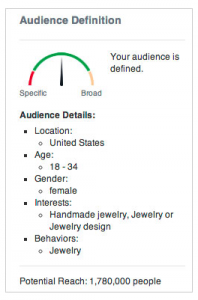
Last week, news broke about Google’s upcoming algorithm change. As of April 21, sites that are not mobile-friendly will be penalized, some even removed from Google’s mobile search index.
This move is an effort on the part of Google to encourage businesses to accept the new ways consumers are accessing information. And, mobile-readiness is a lot more than just a responsive design or mobile site. Google will be ranking sites based on convenience for the end mobile-user, including the ranking factors outlined below:
- Sites must avoid software that is not common on mobile devices, like Flash.
- Sites must use text that is readable without zooming.
- Sites must size content to the screen so consumers do not have to scroll horizontally or zoom.
- Sites must places links far enough apart so that the correct one can be easily tapped.
We caught up with Jon Marsella, executive director at Jasper Interactive Studios, an enterprise ecommerce solution provider, to get some insight on what this change means for online retailers and how enterprise companies not on a flexible SaaS platform can stitch together as a short-term solution.
What does the Google algorithm change really mean?
Google’s search algorithm is set to include an automated litmus test on mobile friendliness for all websites as of April 21, 2015. In short, if a site is not optimized for smartphone viewing, its page ranking status could be heavily penalized. This means that any website having previously appeared in the first or second page of Google’s search results could be bumped down significantly, yielding valuable positioning to competitor sites.
The new ranking algorithm will calculate a scoring penalty on websites that do not support a succinct, easy-to-read and easy-to-navigate user experience specifically on smartphone devices. If a mobile website loads too slowly, contains legacy flash video, or is overloaded with heavyweight imagery it will also be negatively impacted by the coming update.
Why is Google making this change, and why now?
Google has simply moved to broaden its commitment to encouraging quality user experiences for mobile consumers. Unfortunately, the subject of optimized smartphone support has been greatly neglected by many organizations for years now.
In response to this, Google wants to make certain that the web community at large caters more intentionally to an ever increasing number of smartphone viewers. Google’s viewpoint on this subject was expressed back in February of 2013 and thus it would seem the opportunity for any additional warning time for site owners is now up.
At Jasper, we’ve been observing website traffic (having a mobile device acquisition origin) increase by nearly 30% annually since 2010. We’ve since migrated the vast majority of our clients’ sites to fully mobile responsive capability; either by undertaking a larger scale enterprise platform refactoring project or simply deploying new stores on modern SaaS-hosted mobile-friendly shopping platforms like Bigcommerce.
Who will be most affected?
This change will most significantly impact ecommerce retailers whose online stores meet all of the following criteria:
- Rest upon aging legacy technology that is not presently mobile-friendly and additionally lack the malleability to fully adapt by the April 21 deadline.
- Have significant time and resources invested in SEO efforts to improve page rank and also presently enjoy listings that land in the top few pages of Google’s search results.
- Rely heavily on organic search traffic (as opposed to customer or partner referrals) in order to drive their top line sales revenues.
The challenge for larger enterprises to respond to this update can be significant. Unfortunately enterprise commerce publication cycles are typically a slow grind; involving long development cycles, lengthy quality assurance timelines, legal delays, internal politics and dependencies on third party organizations that may not be readily available when needed. The result is that many organizations find themselves in an ill position to respond to this change rapidly enough.
Do you have any advice for online stores that are not mobile-friendly and likely won’t be anytime soon?
This situation is common. Although the ideal remedy is to quickly adapt the storefront for responsive or mobile viewing, that isn’t likely a realistic notion this late in the game for many organizations.
If you cannot respond to a complete mobile readiness plan in time, consider committing a short-term task force within your own organization (or an outside agency) and work with them to produce a quality stop-gap solution.
How to create a lightweight low-footprint temporary mobile view of your most important pages:
- Engage a rapid development cycle with a small capital investment and manageable scope of work.
- Encapsulate as little (and as much) content as is necessary for business continuity. Ensure the user experience for the consumer is such that even if they cannot purchase any product on your temporary site until it’s been fully made mobile-friendly, your customer could at the very least:
- Find out where your store(s) is located and what time they’re open
- View product catalog information (as much as possible)
- Read about the company backstory and view important news/events
- Find relevant contact information
- Find out where your store(s) is located and what time they’re open
- The above should cover the major (potentially already well-ranked) pages, but also ensure that the new mobile homepage is lean and mean. Reduce clutter and elect a minimal amount of relevant attractive artwork.
- Consider including a public statement somewhere on this temporary site acknowledging the importance of the mobile experience to your customers and a note about your organization’s plans to roll out a full featured smartphone friendly storefront in the future.
Make the content fun and engaging. There’s no need to apologize or prostrate your position, either. No crime has been committed here. Plenty of other competitors will be in the same position as you and many of them won’t be bothered to add this additional detail to inform their customers so thoughtfully.
Also, be sure to prototype this process first and try not to spend more than 25% of your time budget on the layout and initial content. You can also test the mobile site as a work-in-progress several times along the way against Google’s own online mobile-friendly validation utility.
The utility will indicate in real time whether or not the new site passes the algorithm’s new mobile scoring rules, and will provide some insights into any potential problems with its design. This will hopefully save your primary storefront from the brunt of the ranking penalty in the short term.
Finally, once your temporary mobile site is live consider engaging a broader and more significantly scoped project plan to bring your storefront into complete mobile and smartphone acceptance.
To avoid future algorithm or other technology updates that will seriously affect site traffic, migrate to a SaaS or cloud ecommerce solution provider.
(250)
Report Post





